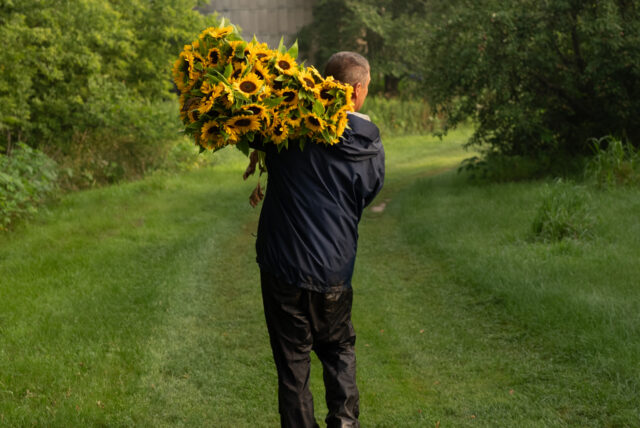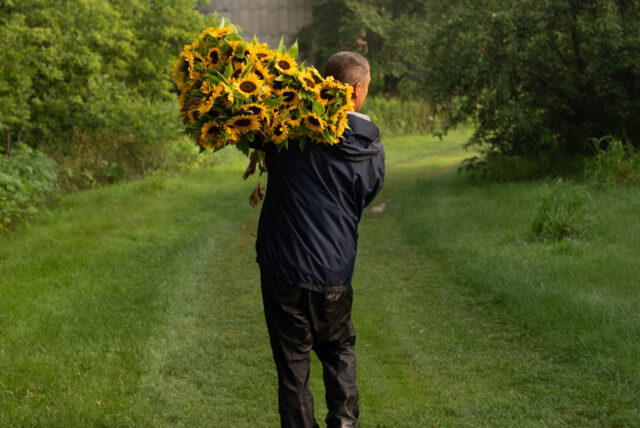
Weatherproof Your Homestead: Regenerative Farming for a Changing Climate
The old apple tree, usually laden with fruit by late summer, stood stark and bare. Martha sighed, surveying her parched vegetable patch. A late frost had nipped the early blossoms, followed by weeks of relentless drought. The changing climate was no longer a distant threat; it was at her doorstep, demanding a new way of thinking about farming. Fortunately, a promising solution was blossoming across the landscape: regenerative farming.

What is Regenerative Farming?
Regenerative farming isn’t just about sustainable agriculture; it's about actively improving the land. It’s a holistic approach that focuses on rebuilding soil health, enhancing biodiversity, and increasing resilience to extreme weather events. Unlike conventional farming, which can deplete the soil over time, regenerative practices work with nature to create a thriving ecosystem.
At its core, regenerative farming is guided by a set of principles that aim to mimic natural systems. While the exact practices may vary depending on the specific environment and crops being grown, some of the most common and effective techniques include:
Cover Cropping: Planting specific crops (like clover, rye, or vetch) between cash crops or during fallow periods. Cover crops act as a living mulch, protecting the soil from erosion, suppressing weeds, and adding organic matter when they decompose. They also help to fix nitrogen in the soil, reducing the need for synthetic fertilizers.
No-Till Farming: Minimizing or eliminating tillage (plowing and turning over the soil). Tilling disrupts the soil structure, releases carbon dioxide into the atmosphere, and kills beneficial microorganisms. No-till farming preserves the soil's natural structure, increases water infiltration, and reduces erosion.
Rotational Grazing: Managing livestock grazing in a way that prevents overgrazing and promotes pasture regeneration. By rotating animals through different paddocks, you allow plants to recover and rebuild their root systems. This increases soil fertility, improves water retention, and enhances carbon sequestration.
"Regenerative farming is about more than just growing food," says seasoned homesteader and author, Sarah Miller, from her fictional book, "My Regenerative Homestead Journey," "It's about creating a thriving ecosystem that supports life, both above and below ground. It's about building resilience into our farms and our communities, so that we can weather whatever storms may come."

These practices, when implemented thoughtfully, lead to healthier soil, increased water retention, and enhanced carbon sequestration – all crucial for building a climate-resilient homestead. Healthy soil acts like a sponge, absorbing and retaining more water during heavy rains, and releasing it slowly during dry periods. This can significantly reduce the impact of both droughts and floods on your crops. And by sequestering carbon in the soil, regenerative farming helps to mitigate climate change by reducing the amount of greenhouse gases in the atmosphere.
Taking Action: Small Steps, Big Impact
You don’t need acres of land or expensive equipment to start implementing regenerative practices on your homestead. Even small changes can make a big difference:
Start Small: Choose one or two practices to focus on initially. For example, you could try cover cropping in your vegetable garden or implementing no-till methods in a small section of your farm.
Observe and Adapt: Pay close attention to how your land responds to different practices. What works well in one area may not work as well in another. Be willing to experiment and adapt your approach as needed.
Build Compost: Compost is the lifeblood of a healthy soil. Start a compost pile using kitchen scraps, yard waste, and animal manure. Compost adds organic matter to the soil, improves its structure, and provides essential nutrients for plants.
Minimize Chemical Inputs: Synthetic fertilizers, pesticides, and herbicides can harm soil life and disrupt the natural balance of your ecosystem. Opt for natural alternatives, such as compost, manure, and beneficial insects.
Learn and Share: Educate yourself about regenerative farming practices by reading books, attending workshops, and connecting with other homesteaders. Share your knowledge and experiences with others to help build a stronger, more resilient community.
For further learning, check out resources like The Sustainable Soil Institute (fictional) or enroll in the Regenerative Homesteading Online Course (fictional) for detailed guidance.
Community plays a crucial role in adopting these practices. Sharing knowledge and resources, swapping seeds, and offering support to one another can make the transition to regenerative farming much easier. Consider joining a local farmers' cooperative or attending a regenerative agriculture workshop to connect with like-minded individuals. Imagine the collective impact of many small homesteads working together to heal the land and build a more sustainable future. A fictional example of this is the "Green Valley Regenerative Farmers Co-op", where local farmers share best practices and resources.

A Future of Resilience
The challenges posed by climate change are undeniable, but they also present an opportunity to create a more resilient and sustainable food system. Regenerative farming offers a path forward, empowering homesteaders to work in harmony with nature, rebuild soil health, and enhance their community's ability to thrive in the face of uncertainty. By embracing these practices, we can cultivate not only healthy crops but also a deeper connection to the land and a brighter future for generations to come. The resilience of nature is within our grasp; let's work together to unlock its full potential.